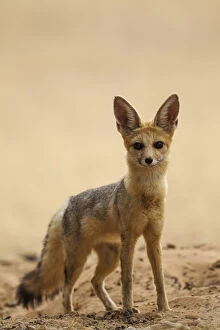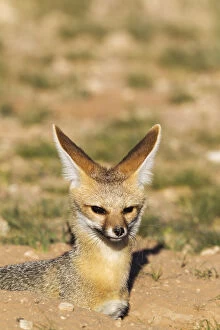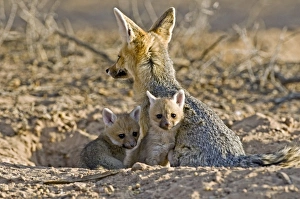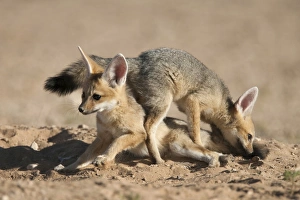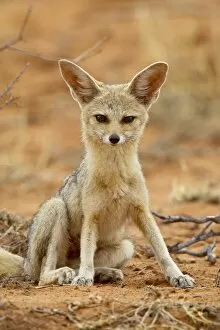Vulpes Chama Collection
Vulpes chama, commonly known as the Cape fox or silver-backed fox, is a fascinating species native to southern Africa
All Professionally Made to Order for Quick Shipping
Vulpes chama, commonly known as the Cape fox or silver-backed fox, is a fascinating species native to southern Africa. With its striking appearance and unique behaviors, this small carnivore captivates both researchers and wildlife enthusiasts alike. Picture No. 12019696 showcases the beauty in its natural habitat. Its sleek silver-gray fur blends perfectly with the arid surroundings, allowing it to remain camouflaged from potential predators or prey. This adaptive coloration helps it survive in diverse environments ranging from grasslands to deserts. In Picture No. 11991434, we witness an intimate moment between two Cape foxes engaging in social grooming. These animals are highly sociable creatures that form monogamous pairs for life. Through mutual grooming, they strengthen their bond while maintaining cleanliness and removing parasites from each other's fur. Picture No. 12019697 highlights the incredible agility as it leaps effortlessly across rocky terrain. Known for their exceptional jumping abilities, these foxes use their powerful hind legs to navigate challenging landscapes with ease. The next image (Picture No. 11991436) portrays a Cape fox scavenging for food during twilight hours when they are most active. Despite being primarily nocturnal hunters, they have omnivorous diets consisting of insects, small mammals, birds' eggs, fruits, and even carrion if necessary. In Picture No. 11991435, we observe a pair of Cape fox pups playfully wrestling under the watchful eye of their parents nearby – a heartwarming sight indeed. The adults invest significant time teaching essential hunting skills to ensure their offspring's survival in harsh environments. Cape foxes exhibit remarkable intelligence and problem-solving abilities as depicted in Picture No. 11991433 where one clever individual successfully retrieves food hidden beneath rocks using its nimble paws and keen sense of smell. Their adaptability is further showcased in Picture No.


